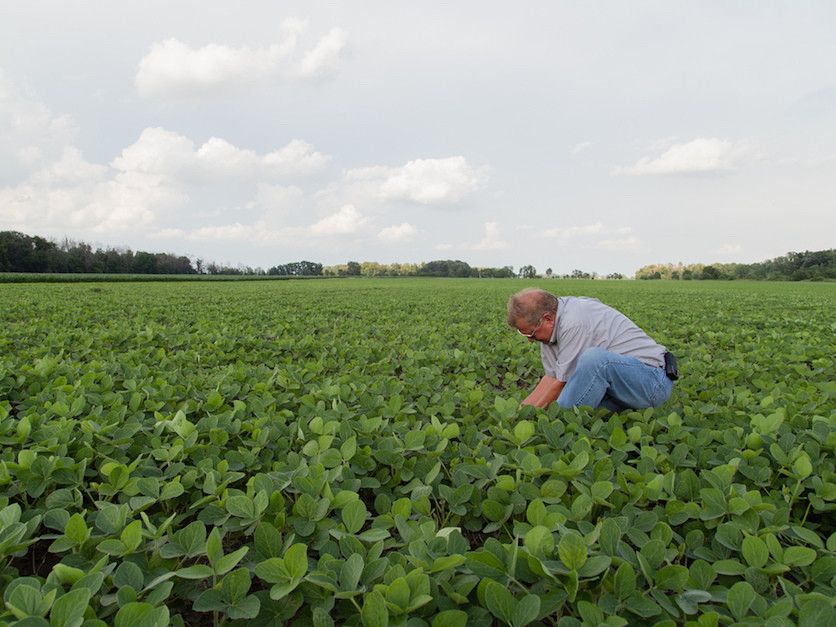WASHINGTON, Aug. 11, 2017 - The decline in commodity prices continues to weigh on farm income and land values, but bankers see signs that the agricultural economy is stabilizing over many of the Midwest and Plains states.
In some regions, land values have even been inching up even with the continued slump in farm earnings, according to the latest quarterly reports from Federal Reserve districts that cover the nation’s midsection.
Economists with the Kansas City Fed, which covers Colorado, Kansas, Nebraska, Oklahoma, Wyoming and western Missouri, said that recent data suggest that conditions in the farm sector are finally stabilizing. Bankers in the region are less pessimistic now than they have been in the past two years, according to the quarterly report.
“Although farm income and farm real estate values continued to decline, and credit conditions weakened further, the pace of deterioration has slowed,” the report said.
Bankers in the region “were generally less pessimistic about economic conditions in the farm sector in the second quarter than in each of the past two years,” the report said.
Some 27 percent of the region’s bankers reported “minor repayment problems,” up from 22.5 percent a year ago, but that was a smaller increase than the jump from 14.8 percent rate in 2015.
Across the Chicago Fed's district, which comprises Iowa, much of Illinois, Indiana and Wisconsin and all of Michigan, farmland values actually increased for the first time in three years despite lower corn and soybean prices, wrote David Oppedahl, senior business economist for the region.
Agricultural credit conditions in the region slowed their recent decline, although loan repayment rates weakened and loan renewals and extensions increased, he said.
He said that relatively strong prices for livestock products had helped boost land values in Iowa and Wisconsin, offsetting the impact of the slump in corn and soybean markets.
There also are reasons for optimism in Texas, which makes up the Dallas Fed district along with parts of Louisiana and New Mexico. Loan demand has fallen, and requests for loan renewals and extensions are increasing at a slower rate while loan repayment rate is stabilizing, according to the Dallas Fed’s quarterly report.
The value of dryland acreage is increasing, and while values for irrigated land remain stable prices for irrigated farmland in the Texas panhandle also are increasing.
The report for the St. Louis Fed, which covers Arkansas, eastern Missouri, southern Illinois and neighboring portions of Kentucky, Mississippi and Tennessee, was a little more pessimistic. Farmland values have declined as has farm income.
“The cumulative effect of multiple-year net income declines has weakened many customers’ financial stability and influenced many to retire or quit,” said one Arkansas banker quoted in the report.
Nationwide, USDA economists have projected that net farm income would decline by 8.7 percent to $62.3 billion this year, the fourth consecutive year of declines. Farm asset values were forecast to fall by 1.1 percent this year, while farm debt was projected to increase by 5.2 percent.
Cropland values nationwide have remained stable this year, despite declines in the central and northern Plains, according to an annual USDA survey. U.S. cropland values, which peaked at $4,130 an acre in 2015, held steady this year at $4,090.
Cropland values rose 6.3 percent in Texas , 6.1 percent in Wisconsin and 1.3 percent in Iowa, while slipping 6.2 percent in Nebraska, 5.4 percent in South Dakota and 3.9 percent in Kansas, according to USDA.
Bankers are counting on crop insurance to help offset the impact of the drought in the upper Midwest and the slump in commodity prices. “With the drought spreading, insurance payments may make up some portion of 2017’s income for a sizable number of District crop farms,” wrote Opperdahl, the Chicago Fed economist.
Some 89 percent of the region’s bankers said agricultural lending in their respective areas would be negatively affected if participation in crop insurance declined, Opperdahl said.
#30


